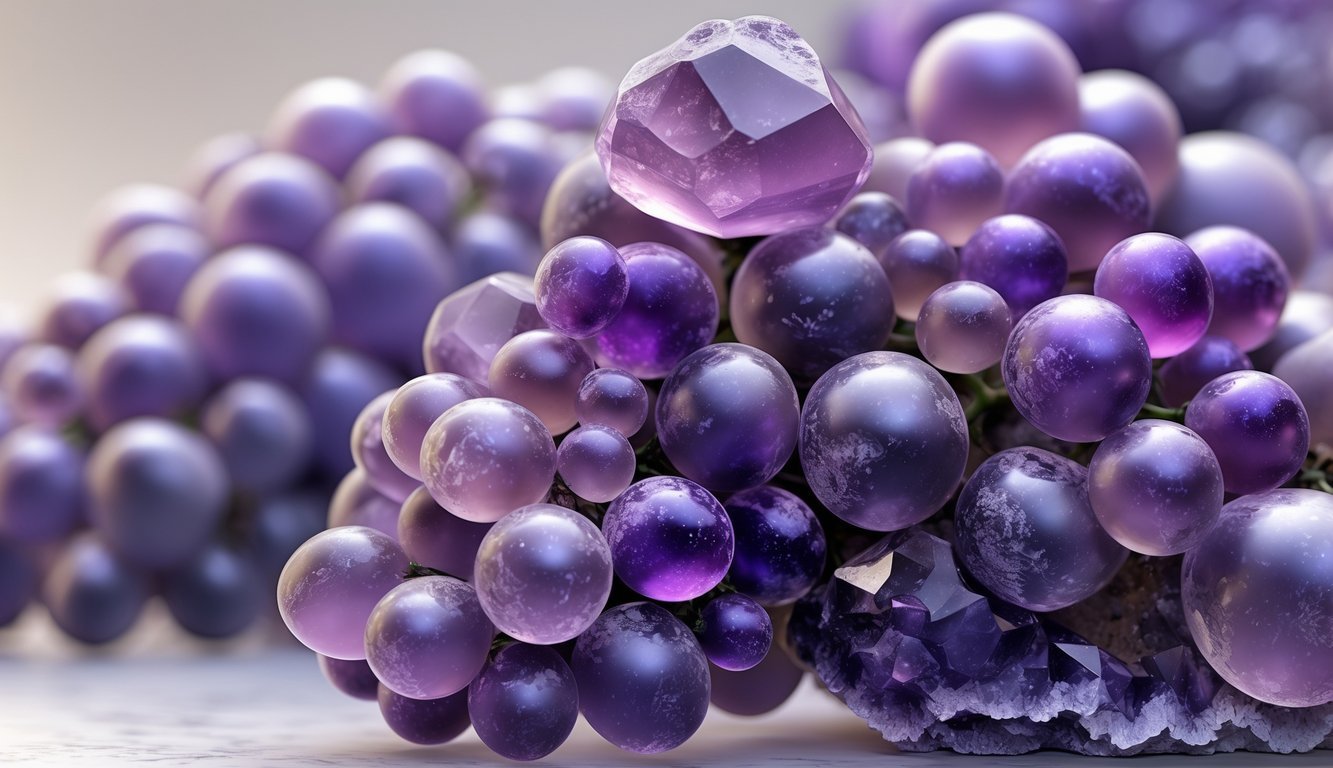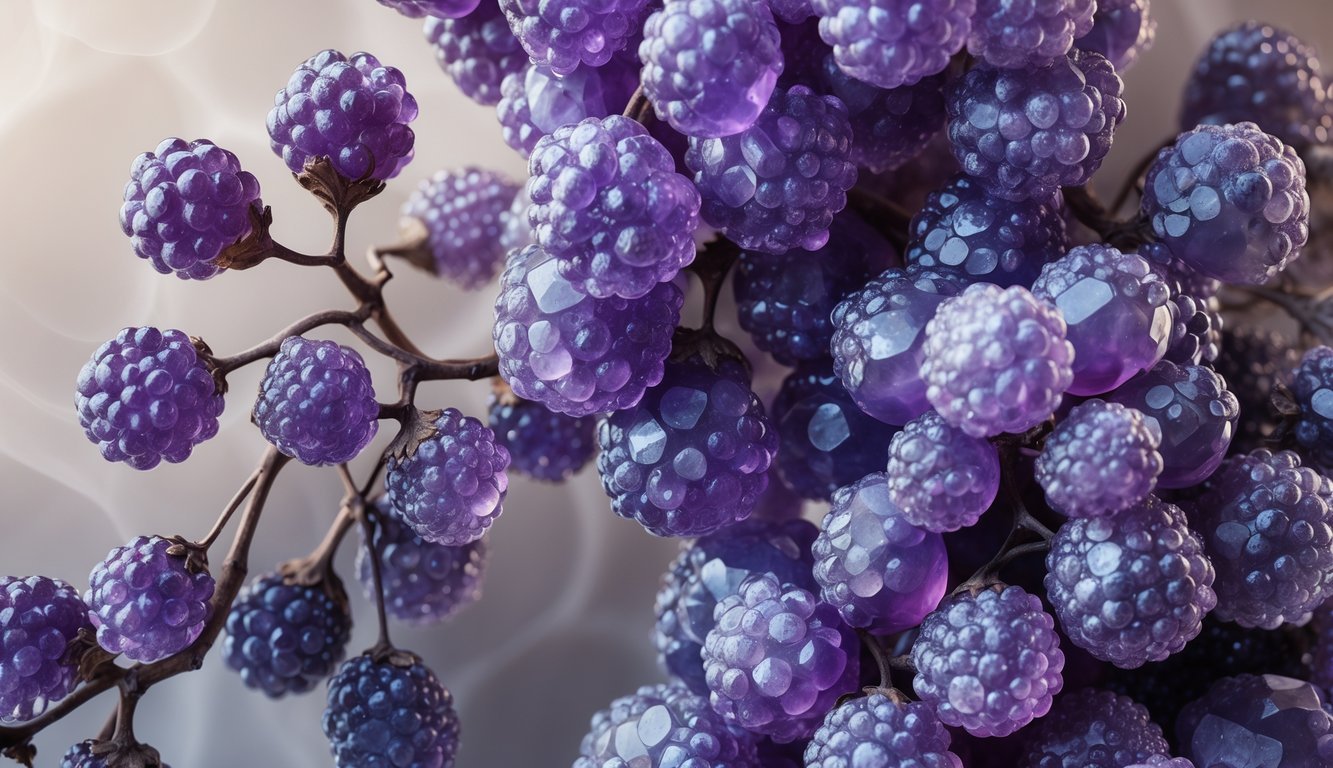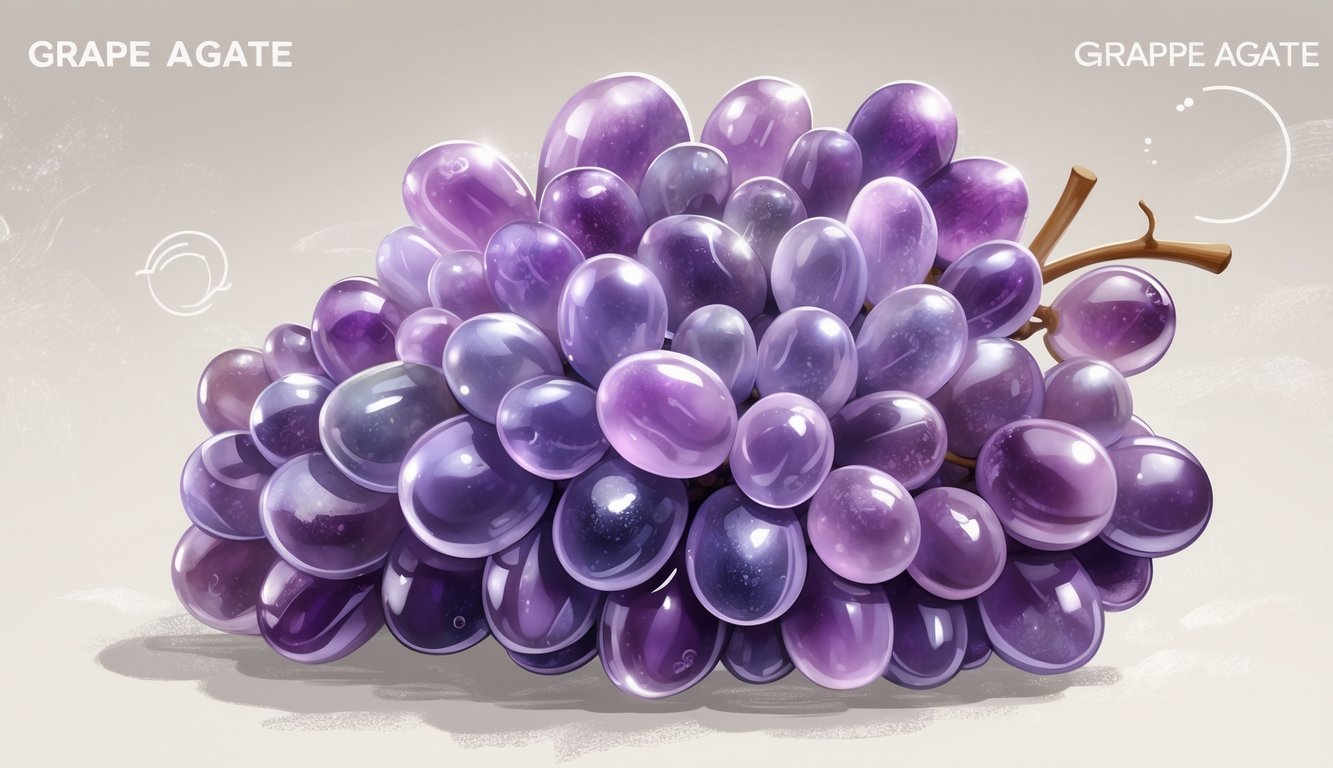Physical Address
304 North Cardinal St.
Dorchester Center, MA 02124
Physical Address
304 North Cardinal St.
Dorchester Center, MA 02124
Grape agate is a unique purple quartz resembling grape clusters, primarily sourced from Indonesia, valued for its decorative appeal and purported spiritual benefits.

Grape agate is a truly unique and eye-catching type of quartz.
It looks just like clusters of tiny grapes, which is probably why so many people love it.
People know it for its purple color and grape-like shapes.
That combo makes it a favorite for collectors and folks looking for a beautiful decorative stone. There’s just something about those natural patterns that draws you in.
You’ll mostly find this stone in Indonesia.
Small, rounded crystals bunch up tightly to form these clusters.
Some people say grape agate boosts intuition and focus.
Are you tired of spinning your wheels and getting nowhere? Simply put, you’re out of sync: you’re out of alignment with your astral configuration.
But: there’s a kind of map that can help you reclaim your alignment. Think of it as your own personal blueprint to success and happiness: a blueprint that will help you live your most amazing life.
Get started here.
They believe it links up certain energy centers in your body.
Whether you’re into its looks or what it might mean, grape agate really does have a special charm.

Grape agate is a mineral that stands out for looking like little clusters of purple grapes.
You’ll spot these rounded groups growing on rocks or tucked inside nodules.
The colors and shapes make it really different from other minerals or agates.
Grape agate is mostly made from chalcedony, which is a type of quartz.
It forms in a botryoidal shape—basically, lots of tiny, round spheres packed together just like a bunch of grapes.
Tiny quartz crystals cover each sphere.
This process takes ages.
Silica-rich fluids seep into rock cracks and, over time, crystallize into grape-like clusters.
The purple color in chalcedony comes from trace minerals that get mixed in while it forms.
You’ll notice grape agate feels hard and smooth.
It lands around 6.5 to 7 on the Mohs scale, so it’s pretty sturdy.
The surface has a soft shine from all those tiny crystals on each little sphere.
Colors can go from deep purple to lighter lavender, and sometimes you’ll see white, gray, green, or blue.
The different shades depend on what minerals are in the mix.
Some pieces have faint internal banding like classic agate, but mostly, it’s those rich purple clusters that get your attention.
Most grape agate comes from the Mamuju area on Sulawesi Island, Indonesia.
The nodules and clusters form in volcanic rocks there, making these stones pretty rare.
You might find similar botryoidal chalcedony in spots like the Green River in Utah or parts of Mexico, but those are much less common.
Collectors really prize the Mamuju grape agate for its color and unique structure.

Grape Agate stands out for its purple shades and those little formations that look like grape clusters.
People value it for supporting spiritual growth, mental clarity, and emotional balance.
You’ll often hear folks connect it to chakras that help with focus, intuition, and inner peace.
Grape Agate connects mostly with your Third Eye and Crown Chakras.
These are the centers for intuition, psychic stuff, and spiritual awareness.
Using this stone might help you tap into your inner wisdom or feel closer to your spirit guides.
People say it helps with emotional healing by easing stress and anxiety.
It brings a sense of calm, making it easier to stay grounded and focused.
Some folks meditate with grape agate to boost dreams or encourage spiritual transformation.
It’s also thought to protect by creating a mental shield against negativity.
If you’re a Sagittarius or facing challenges like cancer, grape agate might help balance emotional and physical stress.
The stone can help bring your mind, body, and spirit together.
You’ll see grape agate in rings, pendants, and bracelets.
Wearing it lets you carry that calming, clarifying energy with you.
Its purple color makes it a hit with gemstone collectors.
In the mineral world, grape agate is valuable because it’s rare and forms naturally.
Watch out when buying—some stones get dyed to look brighter.
Natural grape agate always holds more value.
Collectors look for tight, well-formed clusters and vibrant colors.
If you keep your grape agate jewelry or specimen clean and safe, it should keep its worth.
Size, quality, and where it comes from all affect what it’s worth.
You can pair grape agate with crystals like angelite, selenite, or phenacite.
These combos can deepen spiritual growth, healing, and energy cleansing.
Taking care of grape agate is easy.
Wash it with gentle water and a soft cloth.
Skip harsh cleaners and don’t leave it in sunlight too long, or its color might fade.
Recharge it by placing it near purple quartz or in moonlight.
When you mix grape agate with other crystals, it can boost clarity, stability, and emotional strength.
That’s why it’s a great addition to your crystal collection or spiritual toolkit.

Here’s some info that might help you spot real Grape Agate, understand its price, and know where to buy it.
You’ll also find out about its benefits, what makes its jewelry unique, and a bit about how it forms.
Look for a smooth surface with small, round bumps that really look like grape clusters.
Genuine spheres come in shades from deep purple to pale lilac.
Check for natural patterns.
If the color looks too bright, it might be dyed.
The stone should feel cool and solid in your hand.
The price depends on color clarity and depth.
Richer purple shades usually cost more.
Size and quality matter too.
Bigger spheres with fewer flaws are worth more.
You’ll do best with crystal shops and online sellers who have good reviews.
Look for clear photos and a return policy.
Local mineral shows and gemstone fairs are also good places to find verified Grape Agate.
Some people find it helps with calmness and inner balance.
Many say it supports intuition and mental focus.
It’s believed to connect the crown and third eye chakras, which can aid clarity and self-awareness.
Jewelry made from grape agate shows off those tiny grape-like clusters.
Every piece looks a little different.
It’s gentle but strong, so it works well for pendants, rings, and beads.
Grape Agate forms when tiny quartz crystals slowly grow inside volcanic rock.
Over thousands of years, these crystals cluster together and end up looking like little grapes.
That’s how those smooth, rounded shapes come to be.